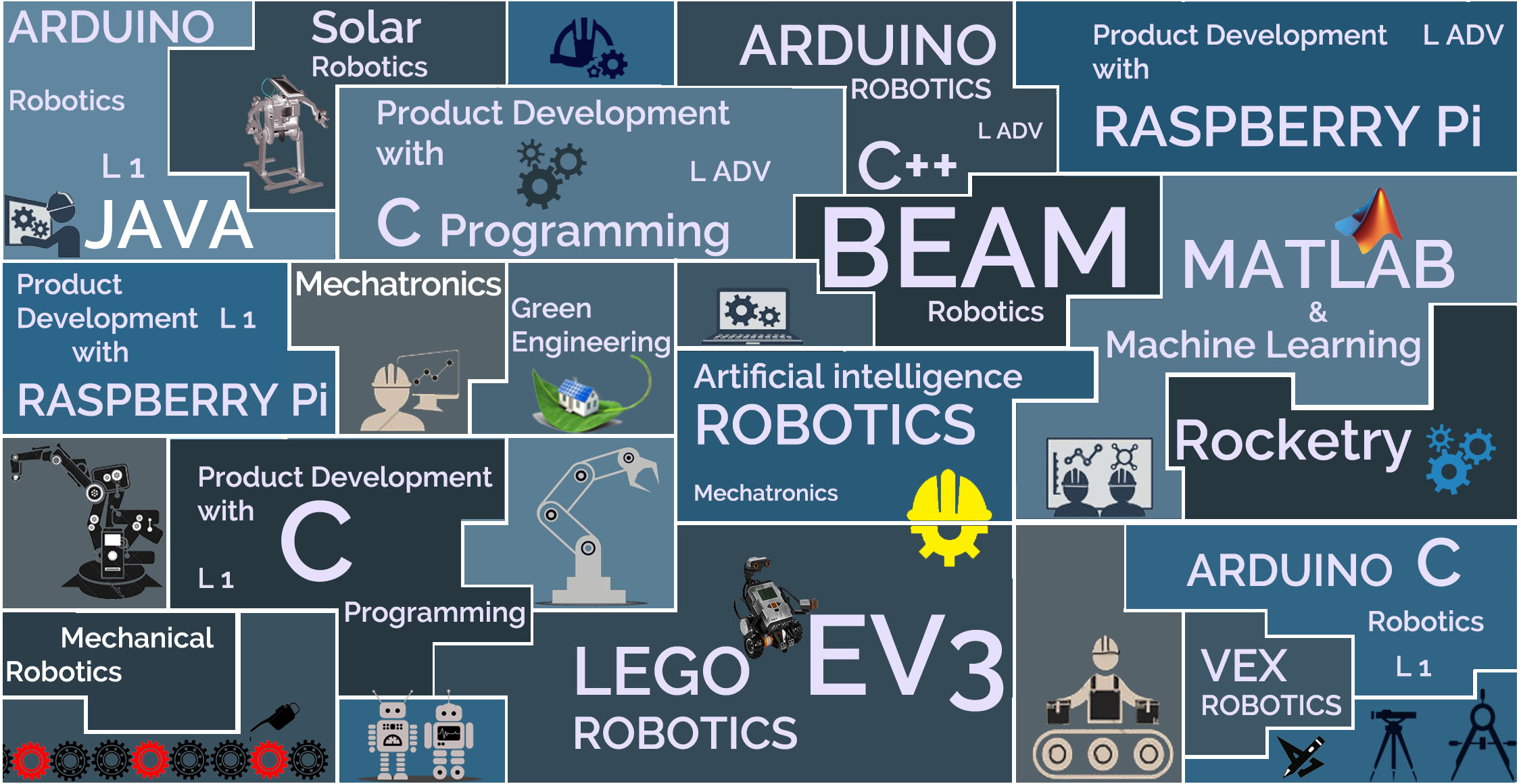Available On-Campus or on ThinnoxCloud!
Mechatronics & Robotics Engineering Program Overview
This program introduces you to the world of simple machines. You start out by making a simple remote controlled game using servos and controllers. You learn to work with tools and to apply the principles of levers, gears and pulleys; you learn to apply the principles of design in general and engineering basics in particular; you learn to work with servos and controllers. Successful completion of the course paves your way to the second level of the STRIDE Engineering program. In subsequent levels you deepen your understanding of the Robotics field: you build a remote controlled mechanical claw; remote controlled cars (with speed controllers, motors, gears and steering systems); and you also learn to apply the principles of pneumatics to the RC devices you build. More advanced levels include programming, computer aided design and welding. STRIDE Engineering foundational program dovetails with offerings in Vex and Lego based platforms. The program puts additional emphasis on demonstrating mathematical competency that you need to master in order to do well in an increasingly technology-driven world. Additionally, you learn critical 21st century life skills, such as collaboration, creativity, communication, problem solving, project management, and critical thinking.
STRIDE Mechatronics & Robotics Engineering Courses:
LEGO ROBOTICS ENGINEERING:
Make programmable robots using Lego NXT and EV3 Coding;
|
VEX ROBOTICS ENGINEERING:
Make programmable robots on the VEX platform;
|
BEAM Robotics ENGINEERING:
Design 3D models and use Hydraulics, Mechanics and Electronics to build BEAM robots;
|
MATLAB & Machine Learning ENGINEERING
Design robots on Inventor, build your robot using 3D printed components, program on Arduino using MATLAB;
|
ARDUINO ROBOTICS ENGINEERING
Design on Inventor and Solidworks, build your robot using 3D printed components, program your robot on Ardruino using C;
|
Product Development with RASPBERRY Pi ENGINEERING
Design on Inventor and Solidworks, build robot using 3D printed components, program on Raspberry Pi using Scratch / Python;
|
AI ROBOTICS ENGINEERING
Design on Inventor and Solidworks, build your robot using, 3D printed components and AI methods;
|
Product Development with C Programming ENGINEERING:
Code with C, build efficient executables;
|
Careers in Mechatronics & Robotics Engineering:
The following list is just a small taste of the possible positions that may be open to you as you move throughout your career. As you develop your skills and find your niche, you may discover your dream job fits into one of these categories, or you may move outside these boundaries; either way, Thinnox's objective is to help you find your way into a fulfilling career doing what you love.
• Robotics engineer
• Automotive technician
• Electronic technician
• Mechanical technician
• Air traffic management
• Project scientists
• Researcher
• Programmers
• Product managers
• Software Developers
• Software engineer


